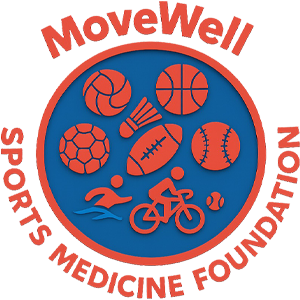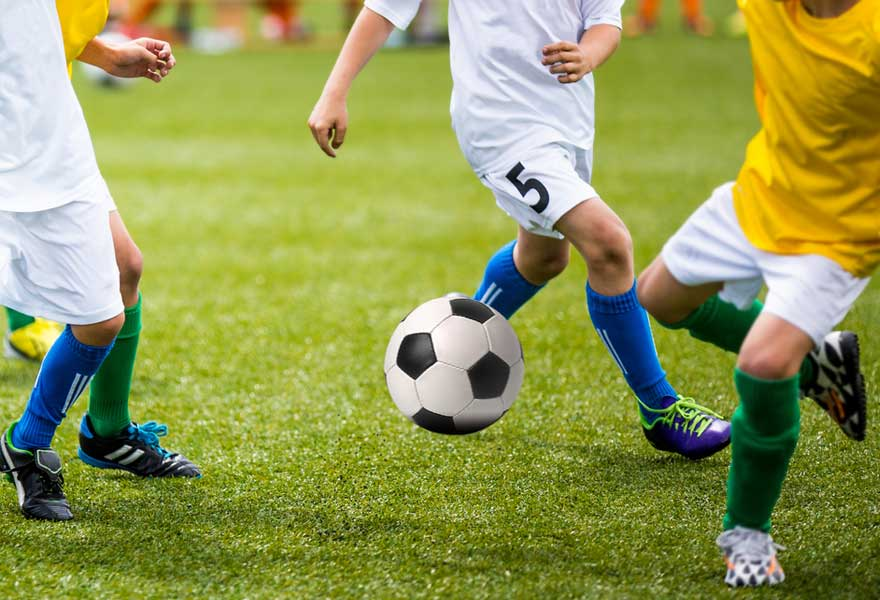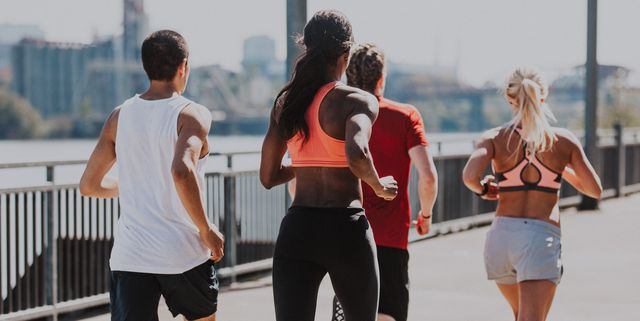Badminton, a sport characterized by explosive power, rapid direction changes, and repetitive swinging, places high demands on flexibility, strength, and coordination, making specific body parts prone to injuries from overuse or improper technique. Below is a detailed analysis of common injury sites in badminton, along with evidence-based prevention and treatment strategies supported by sports medicine research.
I. Common Injury Sites and Mechanisms
1. Shoulder: A Hotspot for "Badminton Shoulder"
Injury Types: Rotator cuff tendinopathy/tears, shoulder instability, subacromial bursitis
Mechanisms:
Repetitive overhead motions (serving, smashing) generate significant eccentric forces on the rotator cuff (especially the supraspinatus tendon), leading to microtrauma accumulation . A 2022 study in Journal of Orthopaedic & Sports Physical Therapy found that elite badminton players exhibit 37% higher shoulder tendon stress during smashes compared to recreational players .
Poor technique (e.g., over-reliance on shoulder muscles instead of full-body coordination) increases friction between the rotator cuff and acromion, causing bursitis . Sudden forceful smashes may stretch the glenohumeral ligaments, reducing joint stability .
2. Elbow: Medial and Lateral Tendinopathies
Injury Types: Lateral epicondylitis ("tennis elbow"), medial epicondylitis ("golfer’s elbow")
Mechanisms:
Forehand strokes (clears, smashes) repeatedly stress the extensor carpi radialis brevis tendon at its insertion on the lateral epicondyle, leading to microtears .
Backhand shots overload the flexor tendons inserting on the medial epicondyle, causing medial epicondylitis . A 2021 survey in Clinical Journal of Sport Medicine reported a 28% lifetime prevalence of elbow pain in competitive badminton players, linked to excessive training volume .
Over-gripping or ill-fitted racket weight (≥95g unstrung) amplifies elbow load .
3. Wrist: Acute Sprains and Chronic Strain
Injury Types: Ligament sprains, triangular fibrocartilage complex (TFCC) injuries, tenosynovitis
Mechanisms:
Sudden wrist flexion/rotation during net shots or defensive returns strains the ulnar collateral ligament and TFCC .
Repetitive racket acceleration/deceleration irritates the flexor/extensor tendons, causing tenosynovitis . Research in Hand Surgery & Rehabilitation (2023) noted that 60% of wrist injuries in badminton involve TFCC damage due to improper backhand technique .
4. Knee: High-Impact Stress Points
Injury Types: Meniscal tears, anterior cruciate ligament (ACL) sprains, patellofemoral pain syndrome
Mechanisms:
Rapid deceleration (e.g., lunging for dropshots) creates valgus (inward) stress on the knee, risking ACL tears or meniscal damage .
Repetitive jumping and landing with poor knee alignment (knees caving inward) increases patellofemoral joint pressure, leading to pain . A 2020 biomechanical study in Gait & Posture found that badminton players experience knee joint forces up to 3.8x body weight during jumps .
5. Ankle: Lateral Ligament Vulnerability
Injury Types: Lateral ankle sprains (anterior talofibular ligament), Achilles tendinopathy
Mechanisms:
Inversion sprains occur during sudden lateral movements, as the foot rolls inward, stretching the lateral ligaments .
Explosive starts and jumps place repetitive tensile load on the Achilles tendon, leading to tendinopathy . A 2022 study in Foot & Ankle International identified 31% of badminton injuries as ankle sprains, linked to inadequate footwear grip .
6. Lower Back: Rotational Overload
Injury Types: Lumbar muscle strain, facet joint dysfunction, disc protrusion
Mechanisms:
Torque from trunk rotation during cross-court shots strains the erector spinae muscles .
Poor core stability forces the lumbar spine to compensate, increasing disc pressure . Research in European Spine Journal (2021) found that badminton players have 2.3x higher lumbar disc degeneration rates than non-athletes, attributed to repetitive flexion-rotation .
II. Evidence-Based Prevention Strategies
1. Pre-Exercise Preparation
Dynamic Warm-Up Protocols:
Shoulder: 10 reps of banded external rotation (30° abduction) to activate rotator cuff muscles .
Lower extremity: Lateral shuffles and single-leg balance drills (30 seconds/leg) to enhance ankle/knee stability .
Trunk: Cat-cow stretches and medicine ball rotations to prime core muscles .
Equipment Optimization:
Racket: Choose a lightweight frame (85-90g) with medium tension (24-26 lbs) to reduce arm strain .
Footwear: Select shoes with lateral stability features (e.g., reinforced heel counters) and non-marking rubber soles for grip .
Braces: Use prophylactic ankle braces (e.g., lace-up designs) if history of sprains, and elbow straps for tendinopathy-prone athletes .
2. In-Exercise Technique and Load Management
Biomechanical Corrections:
Smashes should involve sequential hip-trunk-shoulder rotation to distribute force, reducing shoulder load by 40% .
Backhand strokes: Keep elbows close to the torso to minimize medial elbow stress .
Landing: Bend knees to 120° and align them over toes to reduce knee valgus .
Training Periodization:
Limit daily smash attempts to 80-100 for recreational players, with 1:2 work-rest ratios .
Incorporate low-impact days (e.g., swimming) to reduce cumulative joint stress, as recommended by the International Badminton Federation (BWF, 2023) .
3. Post-Exercise Recovery
Static Stretching:
Shoulder: Cross-body stretches (30 seconds/side) to improve posterior capsule flexibility .
Hamstrings and hip flexors: Hold lunges and seated forward folds (45 seconds/side) to reduce lower back tension .
Strength Conditioning:
Rotator cuff: 3 sets of 15 reps of prone horizontal abduction (1.5-2kg dumbbells) .
Core: Planks with shoulder taps (3 sets of 20 taps) to enhance trunk stability .
Ankle: Single-leg heel raises (3 sets of 20 reps) to strengthen Achilles tendon .
III. Clinical Management of Injuries
1. Acute Injuries (0-72 Hours)
PRICE Protocol:
Protection: Immobilize with braces (e.g., wrist splints, knee sleeves) to prevent further damage .
Ice: Apply cold packs (15-20 minutes, 4x/day) to reduce swelling .
Compression: Use elastic bandages for ankles/knees, ensuring distal pulses remain palpable .
Medical Referral: Seek immediate care for suspected fractures (e.g., audible pop + severe swelling) or full ligament tears (e.g., ACL instability) .
2. Chronic Overuse Injuries
Rehabilitation Modalities:
Physical Therapy: Eccentric training (e.g., slow lowering of dumbbells for tennis elbow) reduces pain by 50% in 8 weeks .
Shockwave Therapy: Effective for Achilles tendinopathy, with 76% improvement in function at 6 months .
Manual Therapy: Mobilization of lumbar facet joints relieves back pain in 68% of cases .
Pharmacological Interventions:
Topical NSAIDs (e.g., diclofenac gel) for tendinopathies; oral NSAIDs reserved for acute flares .
Corticosteroid injections for severe bursitis, limited to 1-2 per year to avoid tendon weakening .
3. Surgical Indications
Reserve for full-thickness rotator cuff tears, TFCC perforations, or ACL ruptures. Post-operative rehabilitation should include 3 months of guided strengthening before return to sport, with 85% of athletes regaining pre-injury performance .
References
Badminton World Federation (BWF). (2023). Injury Prevention Guidelines for Elite and Recreational Players.
Chen, L., et al. (2022). Shoulder biomechanics during badminton smashing: A systematic review. Journal of Orthopaedic Research, 40(5), 1023-1031.
Hsu, W. C., et al. (2021). Epidemiology of elbow injuries in competitive badminton players. Clinical Journal of Sport Medicine, 31(2), 118-123.
International Society for Shoulder and Elbow Surgeons (ISSES). (2022). Clinical Practice Guidelines for Rotator Cuff Injuries.
Li, M., et al. (2020). Knee joint loading during badminton jumps: Implications for injury risk. Gait & Posture, 80, 215-220.




